Boot: Head Kore 120 GW
Stated Flex: 120
Available Sizes: 24.5-30.5
Stated Last (size 27.5): 100 mm
Stated Range of Motion: 53°
Stated Forward Lean: 9° or 16°, with +/- 1° adjustment
Ramp Angle: 4°
Size Tested: 27.5
Stated Boot Sole Length (size 27.5): 313 mm
Blister’s Measured Weight (size 27.5):
- Shells, no Liners (left & right): 1472 & 1477 g
- Liners, no Footbeds: 477 & 477.5 g
- Shells + Liners = 1949 & 1954.5 g
- Stock Insoles: 46.5 & 46.5 g
- Removable Spoilers: 60 & 60 g
Buckles: 4 Micro-adjustable Superleggera buckles with “buckle lock”
Power Strap: 53 mm “Ratchet Velcro” Power Strap
Shell Material:
- Cuff: polyolefin
- Lower Shell / Shoe: polyurethane
Liner: KORE Pro Perfect Fit
Soles: Replaceable Rubber Grip Walk Soles, ISO 23223
Binding Compatibility: Tech / Pin bindings, GripWalk bindings, MNC bindings
Tech Fittings: Dynafit-Certified Tech fittings

Intro
[Editor’s Note: In the interest of getting you information sooner on some of the products we’re reviewing, we’re posting here some of our measured specs and manufacturer details, and will update in the future. Take a look, and let us know in the Comments Section below what questions you’d like us to answer.]
For the 22/23 season, Head has completely overhauled their Kore line of freeride touring boots. The all-new Kore series features five new models, built with either a 98 mm last or 100 mm last, and several features designed to improve both uphill and downhill capabilities. Notable features include a GripWalk sole with a rubber insert at the midsole for off-skis traction, a rebuilt walk mechanism, and buckles that can be locked in a forward position to help enhance mobility on the ascent.
The new walk mechanism is designed to provide a stronger connection between the cuff and shell than their previous design (which only prevented rearward movement when locked) and offers a stated 53° range of motion (vs. 45° on the previous model). In addition, the new boot’s cuff offers forward lean adjustment between a “classic” stance at 16° and a “new” stance at 9°.
Head’s Kore series of both skis and boots have become well known for their use of the lightweight material Graphene, which is reportedly again used in this newest version of the Kore boots. Head’s website states: “Graphene is the thinnest and lightest element ever discovered by mankind. Graphene is also the strongest material on the planet, stronger than diamond and 300 times stronger than steel, all in the thickness of one atom.”
All of the boots within the series feature fully heat-moldable shells, in addition to heat-moldable liners. The new lasts and geometries of the Kore boots are derived from their Formula and Raptor boots.
What Head says about the Kore 120
“Freeride skiers will find optimum uphill and downhill performance in the redesigned KORE 120 GW. The boot’s new geometry, comfortable 100mm last and new innerboot construction is inspired by the Formula series. An upgraded hike/ski mechanism ensures free movement of the cuff and a strong connection to the shell for serious skiing. HEAD’s LYT Tech engineering reduces weight without sacrificing power. Though the boot weighs 1.60 grams, light means strong, thanks to race-inspired downhill performance, supported by a 53mm Power Strap and Superleggera buckles that secure the shell. Backcountry-friendly features include GripWalk soles and Dynafit tech inserts.”

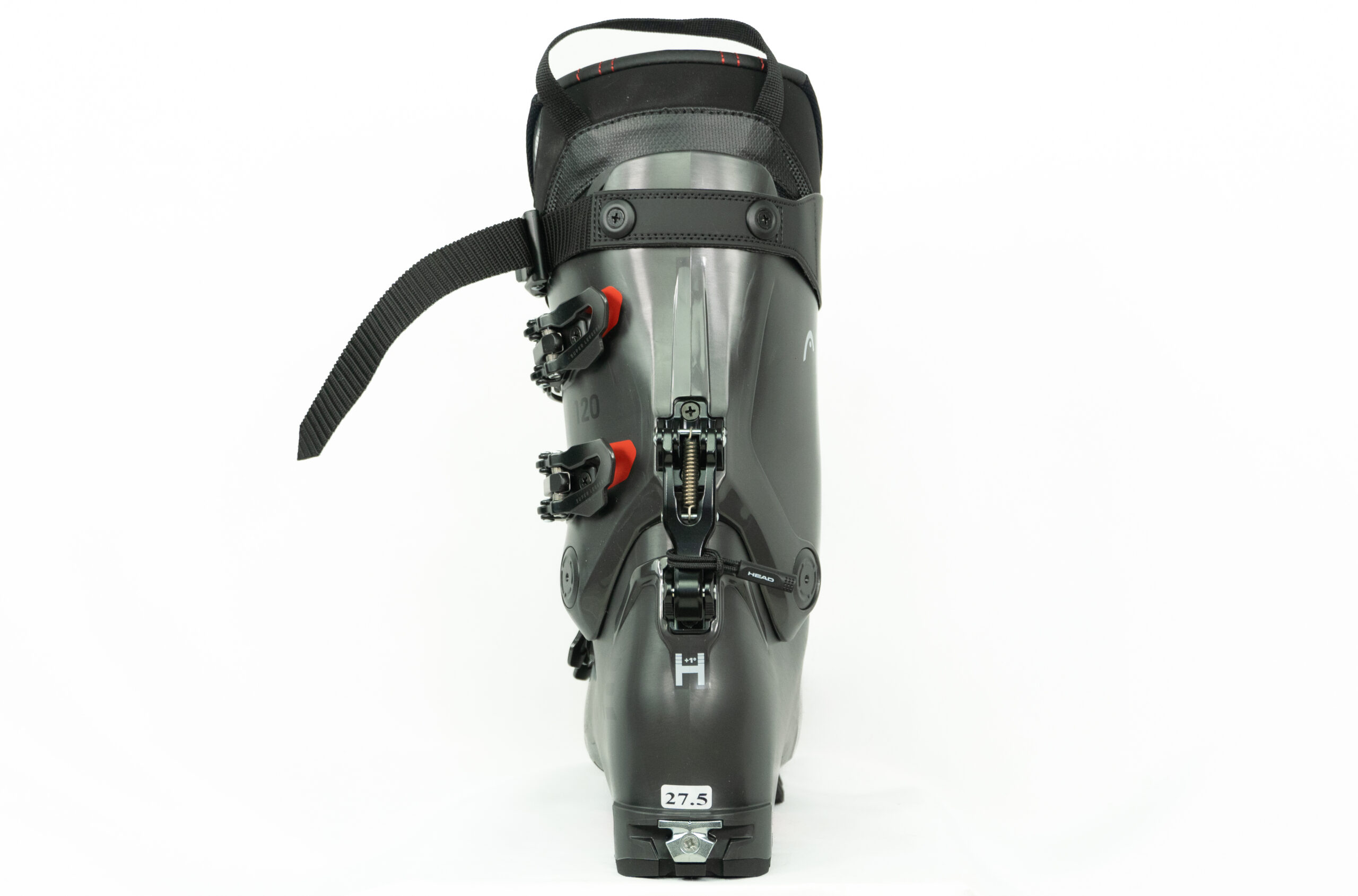
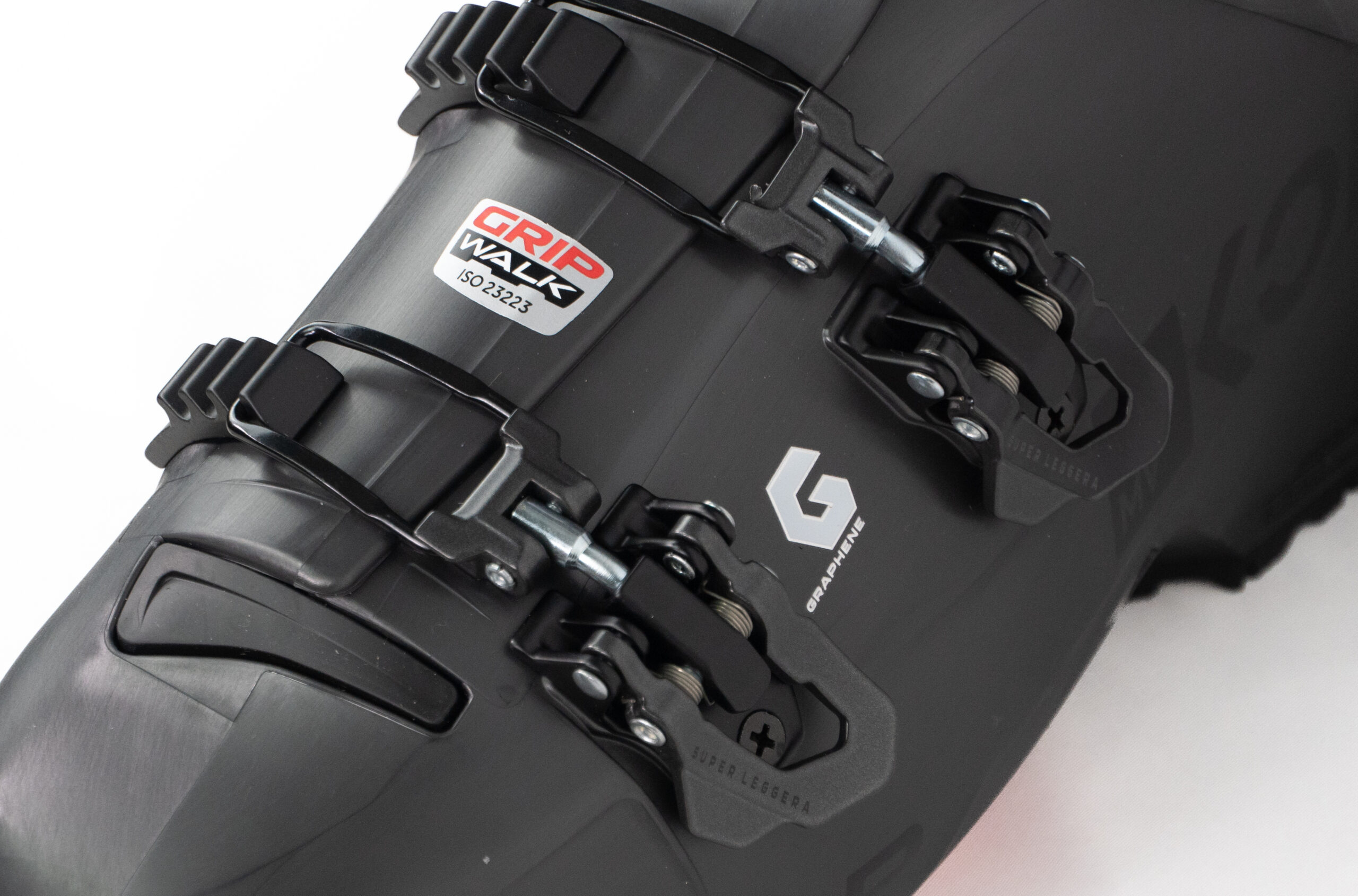
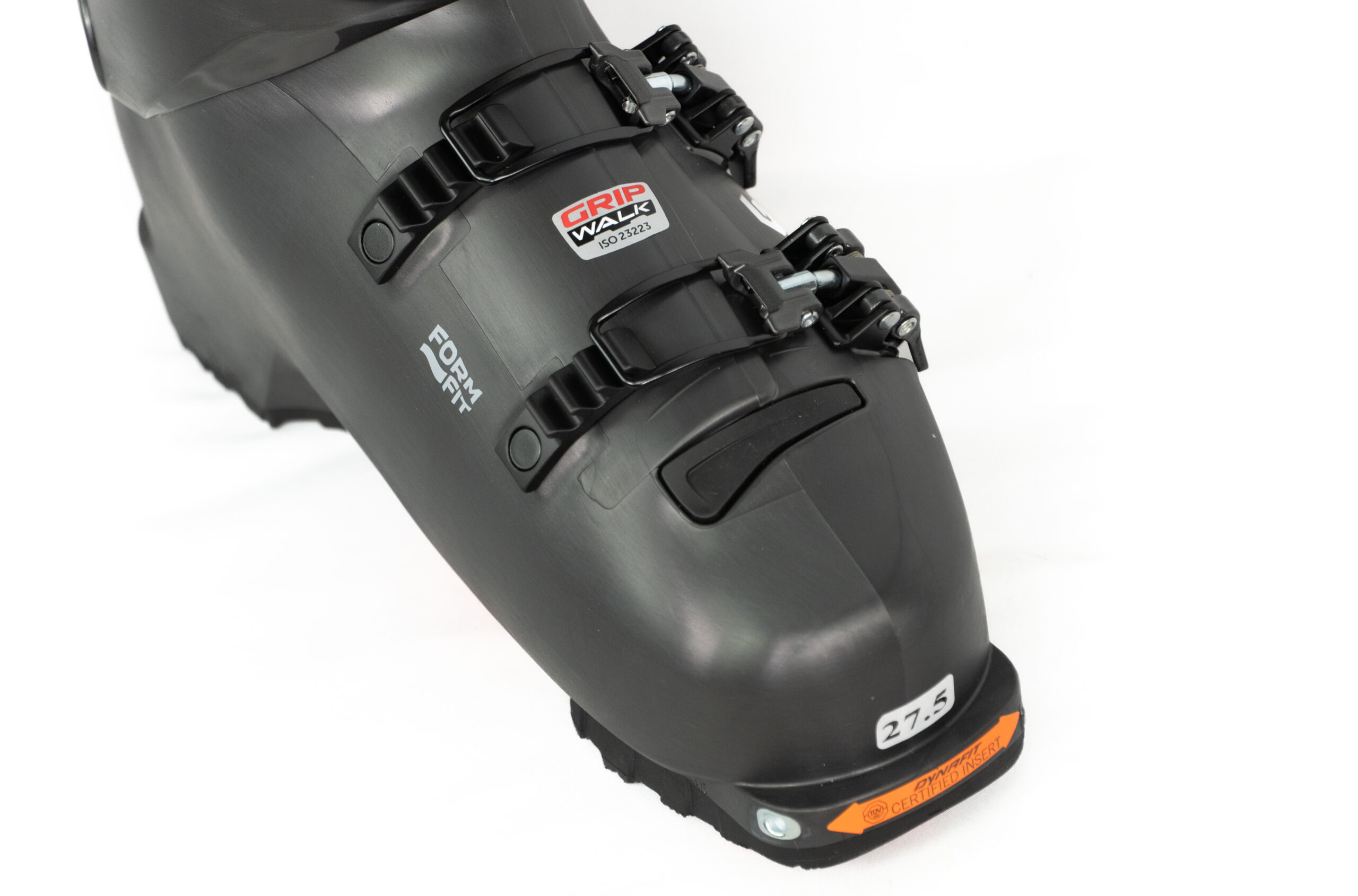
The 22/23 Head Kore series:
All the new Kore boots feature similar silhouettes and features, but there are some very important differences that aren’t immediately clear. First, the “RS” models feature a 98 mm last (size 26.5), whereas the non-RS boots feature a 100 mm last. More importantly, the Kore RS 130 is the only model that uses a lighter Grilamid shell and Head’s much more minimal “Kore Pro Light” liner; the result is that our size 26.5 Kore RS 130 is more than 300 grams lighter than our size 27.5 Kore 120. Apart from the Kore RS 130, the other Kore boots feature PU shells and versions of Head’s fairly heavy and substantial “Kore Pro Perfect Fit” liners. Here’s a quick rundown of the Kore boot series, including stated last widths and MSRP for each model. For reference, the women’s specific models (marked with a “W” in their name) are available in sizes ranging from 22.0–27.5, whereas the other models are available from sizes 24.0–30.5
- Kore RS 130 GW (98 mm last): $1,125
- Kore 120 GW (100 mm last): $1,050
- Kore 110 GW (100 mm last): $925
- Kore RS 105 W GW (98 mm last): $975
- Kore 95 W GW (100 mm last): $850
Weight & Comparisons
Within the varied list of boots below, which includes touring boots we’d classify as being built with downhill performance as a priority, the 22/23 Head Kore 120 GW is situated more toward the heavier end of the spectrum. As we just touched on, it’s interesting that its stiffer and narrower sibling, the Kore RS 130, is so much lighter. That significant weight difference places the Kore RS 130 among some more touring-specific boots, whereas the weight of the Kore 120 is much more in line with “50/50” boots designed for both lift-accessed and human-powered skiing.
Breaking down those weights reveals the largest weight discrepancy lies with liners (the Kore 120 uses the more alpine-style Pro Perfect Fit liner), though the plastics do vary between the two boots (Grilamid vs. PU), as well as the difference in mondo sizes (26.5 vs. 27.5).
For reference, here are a number of our measured weights for some comparable boots. For our measured weights, we list the weights of each shell + the weights of each liner, then the total weights of the shells + liners. Click the links for each boot to see which model years the weights apply to.
Scarpa Maestrale RS (24.5 / 25.0): 1053 & 1057 + 244 & 245 = 1297 & 1302 g
Tecnica Zero G Tour Pro (26.5): 1099 & 1100 + 210 & 211 = 1309 & 1311 g
Dynafit Hoji Pro Tour (26.5): 1169 & 1174 + 214 & 215 = 1383 & 1389 g
Salomon MTN Explore (26.5): 1126 & 1135 + 281 & 281 = 1407 & 1416 g
Scarpa Maestrale XT (26.5 / 27.0): 1258 & 1258 + 247 & 252 = 1505 & 1510 g
Head Kore 1 (26.5): 1132 & 1136 + 392 & 393 = 1524 & 1527 g
Salomon S/Lab MTN Summit (26.5): 963 g & 971.5 + 212.5 & 215 = 1187 & 1178 g
Atomic Hawx Ultra XTD 130 (26.5): 1147 & 1150 + 403 & 404 = 1550 & 1554 g
Fischer Ranger Free 130 (26.5): 1204 & 1204 + 348 & 351 = 1552 & 1555 g
Roxa R3 130 T.I. (27.5): 1319 & 1320 + 263 & 263 = 1582 & 1583 g
Head Kore RS 130 GW (26.5): 1334 & 1340 + 279 & 276 = 1613 & 1616 g
Dynafit Hoji Free (27.5): 1317 & 1332 + 331 & 325 = 1648 & 1657 g
Atomic Hawx Prime XTD 130 (26.5): 1242 & 1249 + 408 & 410 = 1650 & 1659 g
K2 Mindbender 130 (26.5): 1428 & 1427 + 346 & 348 = 1774 & 1775 g
Fischer Ranger Pro 130 GW DYN (26.5): 1381 & 1381 + 388.5 g & 392.5 = 1770 & 1774 g
Lange XT3 130 LV (26.5): 1407 & 1410 + 368 & 368 = 1775 & 1778 g
Nordica Strider Pro 130 DYN (27.5): 1445 & 1440 + 363 & 373 = 1808 & 1813 g
Tecnica Cochise 130 (22/23) (26.5): 1398 & 1405 + 422 & 419 = 1820 & 1824 g
Dalbello Lupo Pro HD w/o Tongues (26.5): 1589 & 1596 + 266 & 267 = 1855 & 1863 g
Full Tilt Ascendant SC w/o Tongues (26.5): 1577 & 1576 + 286 & 288 = 1863 & 1864 g
Head Kore 120 GW (27.5): 1472 & 1477 + 477 & 477.5 = 1949 & 1954.5 g
Dalbello Lupo Pro HD w/ Tongues (26.5): 1747 & 1754 + 266 & 267 = 2013 & 2021 g
Full Tilt Ascendant SC w/ Tongues: 1740 & 1739 + 286 & 288 = 2026 & 2027 g
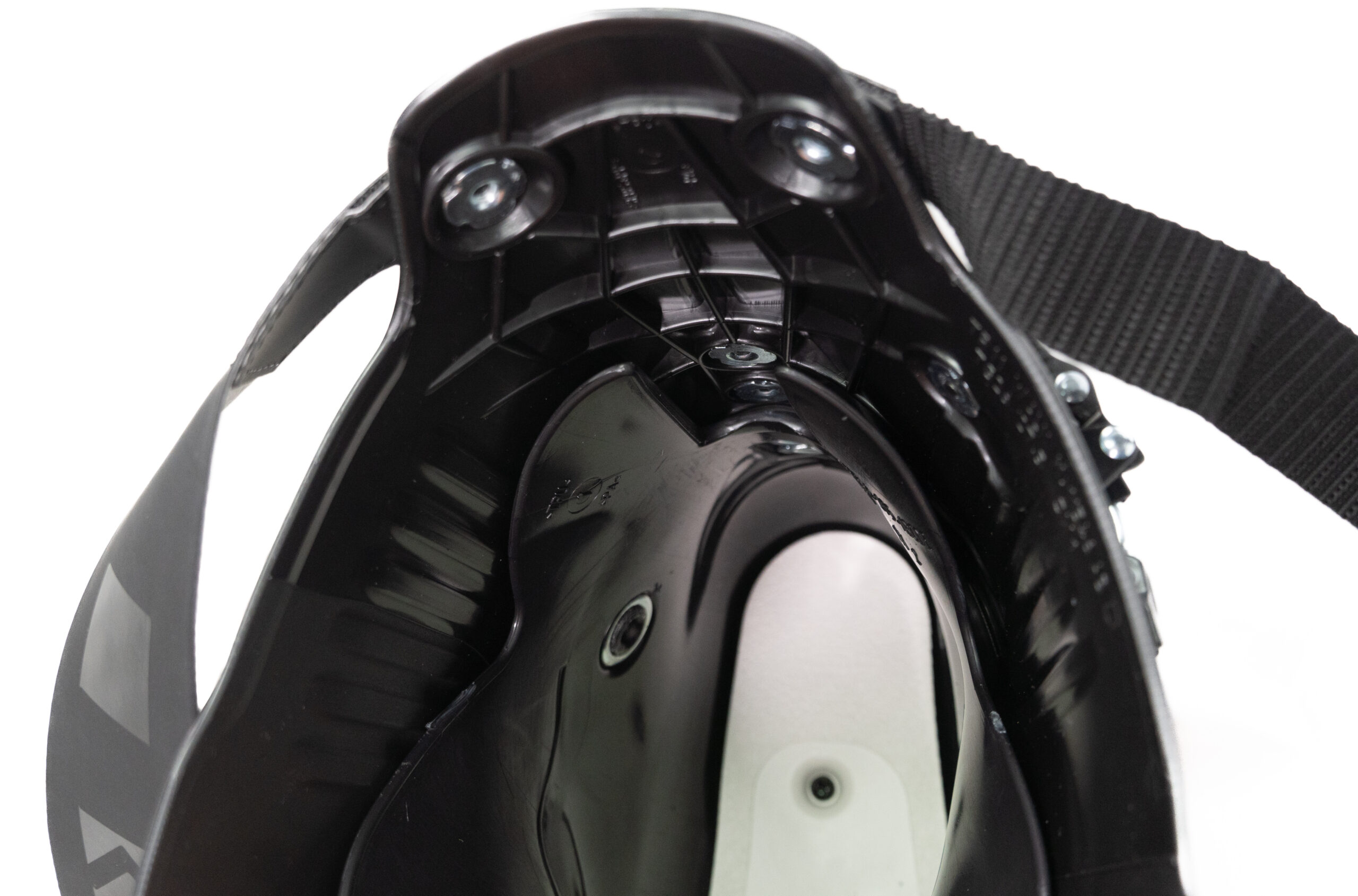
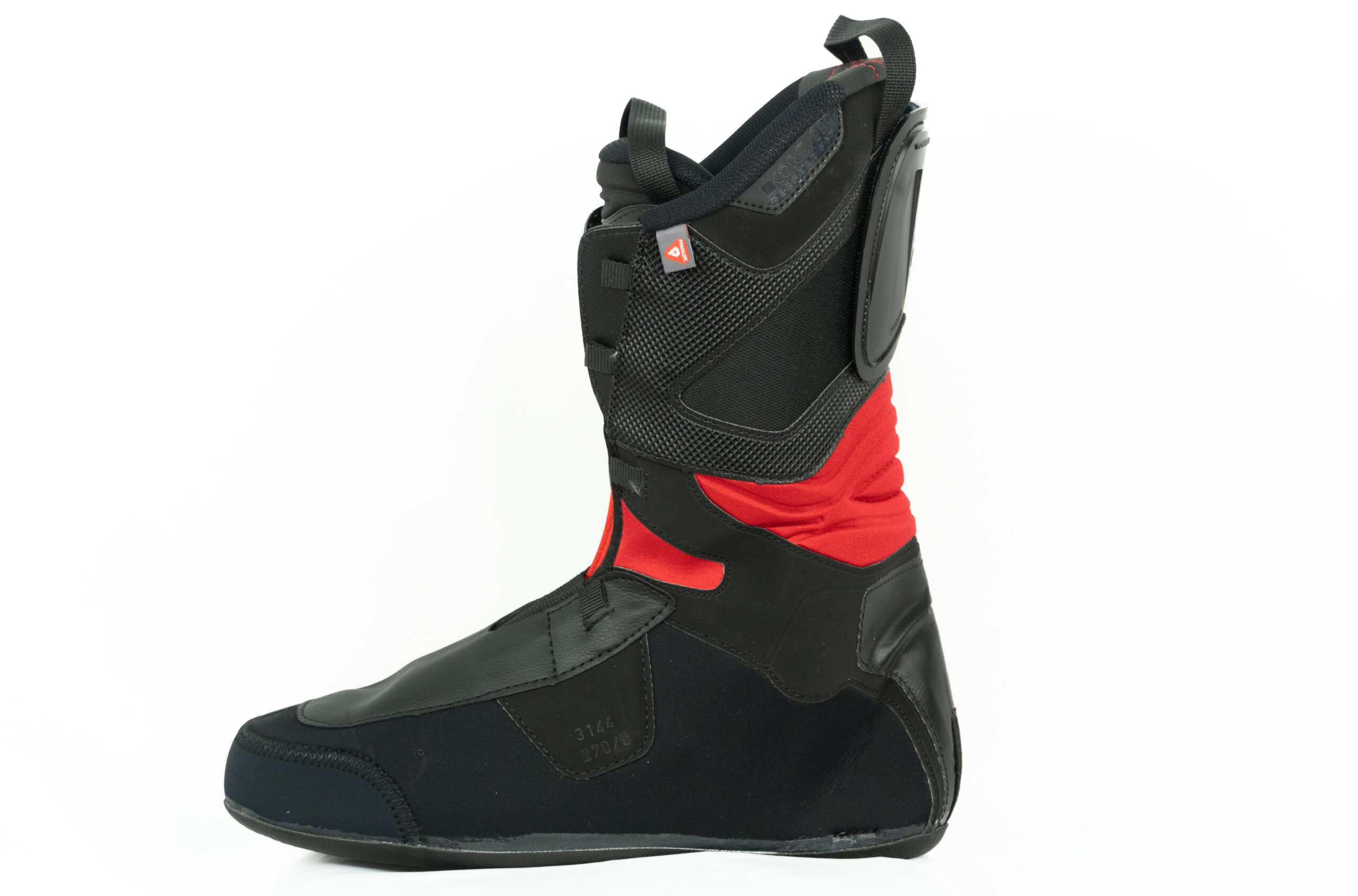

Things We’re Curious About
The original Kore boots were lightweight, but lacked stiffness and range of motion when compared to several of their competitors. With a complete rebuild targeted specifically at addressing the downsides of the old series, we are eager to see how this new version compares. Additionally, as a fairly heavy downhill-oriented boot with a GripWalk sole, we are curious to see how viable the new Kore 120 GW is as a do-it-all boot for inbounds and backcountry skiing.
Lastly, it will also be interesting to distinguish the various fit differences between the new vs. old Kore boots, given that the new Kore series is built with different molds and includes ample options for customization.
Stay Tuned
We will be putting more time in the new Kore 120 GW once there is some snow on the ground, but in the meantime let us know of any thoughts or questions you have in the comments section below. You can also find our initial impressions of the boot in our 22/23 Winter Buyer’s Guide.


You folks do such a good job breaking down the weights, great work keep it up!
A light liner might be the way to go, but it might not. Either way, you can swap in an aftermarket liner.
The one request I have is that you add more sizes, especially 26.5, so we can compare apples to apples.
Even if you can on”y test one size, perhaps at the Summit, or when a rep stops by, quickly weigh the boots in a different size.
Or even ask the brands to weigh them the way you do, on an actual production sample, left and right, shell and liner.